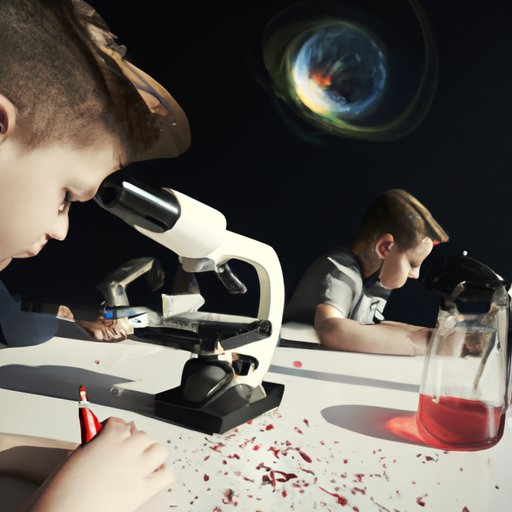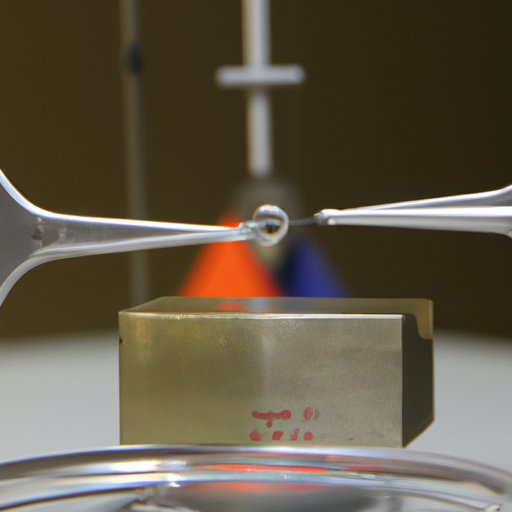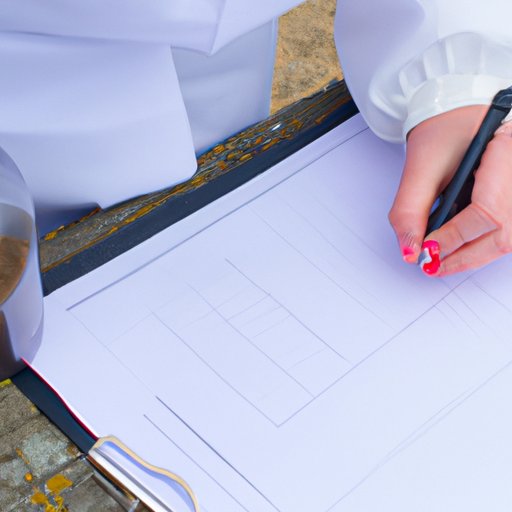Introduction
Scientific observation is the process of gathering information through direct or indirect means. It is an important part of the scientific method that allows scientists to make sense of the world around them. By observing and collecting data, scientists can gain valuable insights into the natural world and its phenomena. This article will explore the basics of scientific observation and provide a beginner’s guide to making observations in science.

Exploring the Basics of Scientific Observation
There are two main types of scientific observations: qualitative and quantitative. Qualitative observations involve describing a phenomenon without using numbers or measurements. Examples include observing the color of a leaf or the texture of a rock. Quantitative observations involve measuring a phenomenon and assigning numerical values to it. Examples include measuring the temperature of a room or the height of a tree. Both types of observations can be used to support scientific theories and hypotheses.
Observations are used in many different fields of science. For example, in biology, observations can be used to study animal behavior or identify new species. In chemistry, observations can be used to detect reactions between chemicals or measure the concentration of a solution. In physics, observations can be used to track the motion of objects or measure the force of gravity. Observations can also be used in social sciences such as anthropology, sociology, and psychology.
A Beginner’s Guide to Making Observations in Science
Making accurate observations in science requires careful attention to detail. Before making any observations, scientists should create a plan that outlines what they hope to observe and how they plan to collect the data. Guidelines for making accurate observations include the following:
- Write down all observations as soon as possible after they occur.
- Be as specific as possible when describing an observation.
- Avoid making assumptions about what you observe.
- Double-check your observations with other sources if possible.
- Record any changes over time.
In addition to paying attention to detail, scientists need to use the right tools when making observations. Common tools for scientific observation include magnifying glasses, microscopes, thermometers, stopwatches, and measuring tapes. Scientists may also use specialized instruments such as spectrometers, calipers, and barometers. The type of tool used will depend on the nature of the observation.

How to Make Accurate Observations in Scientific Experiments
Once a plan has been created and the necessary tools have been gathered, scientists can begin making observations. The first step is to gather data by observing the phenomenon being studied. This involves making notes, taking pictures, and recording measurements. After the data has been collected, scientists can analyze it to look for patterns and trends. This analysis can help scientists draw conclusions about the phenomenon being studied.
Scientists must be careful to avoid bias in their observations. Bias occurs when a scientist’s preconceived notions influence how they interpret the data they collect. To prevent bias, scientists should strive to remain objective in their observations and focus solely on the facts. They should also double-check their results with other sources if possible.
Uncovering the Secrets of Scientific Observation
Making accurate observations in science requires practice and patience. Scientists must develop a systematic approach to observation that includes careful planning, attention to detail, and the use of appropriate tools. They should also analyze the results of previous experiments to determine what worked and what didn’t. By learning from past mistakes, scientists can improve their observational skills and uncover the secrets of scientific observation.
Learning to Look Closer: Techniques for Making Observations in Science
Making accurate observations in science requires close attention to detail. Scientists should take the time to carefully examine the phenomenon they are studying. They should use all five of their senses to take in as much information as possible. For example, if a scientist is observing a flower, they should look at its color, smell its scent, feel its texture, and listen to any sounds it makes.
Scientists should also keep a logbook of their observations. A logbook is a written record of all observations made during an experiment. It can be used to keep track of the data collected and compare it to previous results. Keeping a logbook can help scientists identify patterns and draw more accurate conclusions.

The Art of Observing: Tips and Tricks for Scientists
Making accurate observations in science requires practice and dedication. Scientists should strive to refine their observational skills by continually practicing and honing their techniques. They should also take the time to review their results and make adjustments as needed. With enough practice, scientists can learn to make more accurate observations and uncover the secrets of scientific observation.
Conclusion
Scientific observation is an important part of the scientific method that allows scientists to gather data and draw conclusions about the natural world. This article explored the basics of scientific observation and provided a beginner’s guide to making observations in science. Tips and tricks were also provided to help refine observation skills and uncover the secrets of scientific observation.
By following the guidelines outlined in this article, scientists can learn to make accurate observations in science and uncover the secrets of scientific observation. With enough practice and dedication, scientists can become experts in the art of observation and make significant contributions to the field of science.
(Note: Is this article not meeting your expectations? Do you have knowledge or insights to share? Unlock new opportunities and expand your reach by joining our authors team. Click Registration to join us and share your expertise with our readers.)
